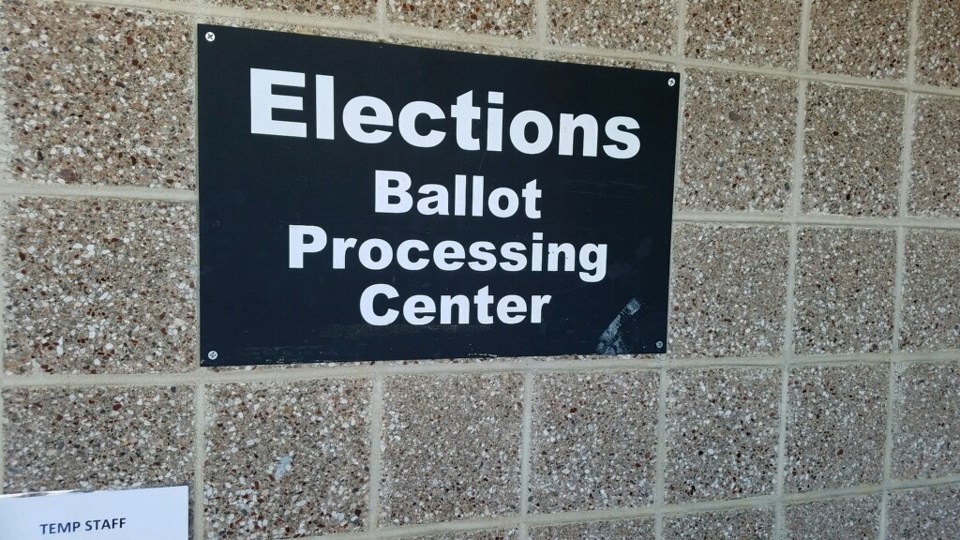Boulder County’s Ballot Processing Center is already humming with activity just days before the Nov. 8 general election as workers collect and examine ballots already streaming into the two-story facility in Boulder.
Eyes squint at screens to verify signatures and ballots are collected in bins and tabulated throughout the day. Election workers lean over ballots to smooth them out to ensure they can be easily processed.
A campaign watcher strolls through the facility to ensure every move is legitimate and above suspicion.
Outside, 24-hour ballot drop boxes are under 24-hour video surveillance during the election and bi-partisan courier teams transport boxes directly to the processing center. The clerk’s office “Chain of Custody” process is carefully monitored through the Ballot Box Tracking System, County Clerk and Recorder Molly Fitzpatrick said this week.
“We are doing everything we can to ensure this election is secure and transparent,” Fitzpatrick said.
As many as 500 judges and workers were hired to help process and monitor this year’s election and most make about $18 an hour, Fitzpatrick said. They are members of the community who take their jobs seriously, she said.
“These are friends, neighbors who all want to make sure this election is conducted fairly,” Fitzpatrick said. “We all want the same thing.”
On a recent media tour of the processing center, Fitzpatrick pointed out the division of labor needed to ensure the election runs smoothly.
On the first floor, sealed ballot boxes are delivered via the bipartisan team from the U.S Post Office, county vote centers, 24-hour drop boxes and drive-by drop-off locations. Once inside, ballot boxes are scanned in the office’s tracking system, according to the clerk’s office.
Ballot boxes are then opened and ballot envelopes are organized into trays for the mailbox envelope sorter. Envelopes are sorted into batches for ballot processing and envelope signatures are captured to support the signature verification process, she said.
Election judges then verify the envelope signature against the voter’s signature on file, according to the clerk’s office.
If the signature is accepted, the ballot envelope is marked as “Accepted.” If there is a signature discrepancy, the voter is contacted, Fitzpatrick said. All the bi-partisan signature verification judges have specialized training in spotting discrepancies in signatures, she said.
On the facility’s second floor, envelopes are arranged in trays and unopened ballot envelopes are fed through “Rapid Extraction Desks”, which open the envelope and allow an election worker to extract the voted ballot, Fitzpatrick said.
Every ballot is manually inspected by election judges for damage or improper marks. The ballots are then flattened and prepared for the scan room, she said.
Ballots are scanned into the voting system while damaged or improperly marked ballots are sent to a bipartisan team of election judges. This “adjudication” process helps determine voter intent on rules issued by the Secretary of State’s office, Fitzpatrick said.
Few, if any, reports have filtered in concerning voter intimidation or other voting misdeeds, she said.
Still, sheriff’s deputies have also been instructed on recognizing problems at drop boxes and voting centers, Fitzpatrick said. “We all want this to be an exercise in democracy and how it works,” she said. “We want things to go smoothly.”



